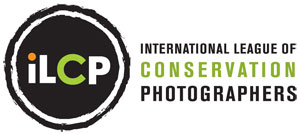Maybe it’s because I’m still reeling from yesterday’s mind-blowing announcement from Lytro (light-field tech for the masses, please don’t be vaporware), but I’ve got photography on my mind. So much so that I dusted off my DSLR yesterday, brushed up on some basics and made tentative plans to soak up some of this summer’s sights via my camera’s image sensor.
And today, in a happy little burst of cosmic luck, Treehugger’s Jaymi Heimbuch introduces all of us to the awesome art and discipline of Conservation Photography. As noted in her piece, conservation photography is defined thusly:
Conservation photography combines nature photography with the proactive, issue-oriented approach of documentary photography as an agent for sustaining the biosphere and ethnosphere. Conservation Photography furthers environmental or cultural conservation through ethical photography.
I think Garth Lenz (killer last name), an International League of Conservation Photographers (iLCP) fellow, puts it best in the opening moments of Neil Ever Osborne’s film, “Witness: Defining Conservation Photography.” He describes it as “creating images that will effect change and ensuring that those images do effect change.” He immediately adds, “The responsibility doesn’t end when you trip the shutter, it actually begins then.”
As you’ll see in the short film, some images expose yet another side of nature we’ve never laid eyes on. Others are haunting. All, however, are visually arresting and lock your eyes in attention. But as Lenz points out, that’s only part of conservation photography’s purpose.
Effecting change
Realizing that producing beautiful photos for beauty’s sake would contribute little to the cause, iLCP is making sure that the message comes along for ride by engaging with scientists, government and environmental groups. The result is a portfolio of works that add a targeted, visual dimension to causes that are often lost in the din of political and economic controversy. Not to mention, they are sometimes burdened with scientific baggage that many people seem unwilling to bear.
All good stuff, but the techie side of me is more excited about the social media potential and how it can help this movement really take off. They’re off to a good start. You can already peruse their Flickr photostream, follow iLCP on Twitter and “like” its Facebook page. I’m hoping to see them more strongly embrace the medium of photography that they love so much to spread their message — provided that image rights issues don’t trip things up. They’re likely to find a willing, if not hungry, audience.
Redditors, for instance, are notorious for loving their eye-candy (they just love their Imgr). Thought they tend toward funny cat pics and other meme-tastic shots, they’re not shy about up-voting well-captured scenes. Similarly, Tumblr users are fanatical about re-blogging posts containing pics they love. In making “sure those images get before the people,” which Lenz identifies as a critical part of iLCP’s mission, these can be valuable tools.
I encourage you read to Jaymi’s post at Treehugger, watch “Witness: Defining Conservation Photography” below and keep your eyes peeled for iLCP’s ecoSocial moves.
Witness: Defining Conservation Photography Feature from Neil Ever Osborne on Vimeo.


Huge thanks to @JaymiHeimbuch for introducing us to Conservation #Photography http://bit.ly/kZWyj5